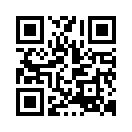Technology Used in Touchscreen Electronics
Technology Used in Touchscreen Electronics
Touchscreens have been growing in popularity, with a bevy of new devices coming to market in recent years, such as the iPod touch and iPad, as well as numerous competitors' proprietary versions of these devices. It may be surprising to some that the technology behind those much lauded touchscreens can vary drastically from model to model, even within a single device category.
Capacitive Touchscreens
Capacitive touchscreens make use of an underlying framework of roughly finger-sized electrode plates that touch each other when the screen is pressed, creating an electrical signal. The signal is then translated via a complex algorithm into a coordinate input command.
Resistive Touchscreens
Resistive touchscreens are composed of a layered screen sandwich, in which an electrically conductive membrane is moved during a touch event. The filament connects to the underlying receptor layer, creating a signal that is calculated via algorithm into coordinate form. Resistive touchscreens are ideal for single contact point applications because when one point is touched the conductive membrane is stretched and loses sensitivity in other locations.
Optical Interrupt Touchscreens
Optical interrupt touchscreens use a series of light sources and input cameras to determine when a screen is touched by looking for breaks in the light signal pattern. Optical interrupt touchscreens can be finicky, since dust and moisture can disrupt touch sensitivity by obscuring light patterns.
Dispersive Touchscreens
Dispersive touchscreen technology is a proprietary invention and is considered one of the most durable and reliable forms of touchscreen display. Dispersive touchscreen works on the principle of interpreting bending waves through solid material. The data from the material bending waves is then converted via algorithm into coordinate data.


